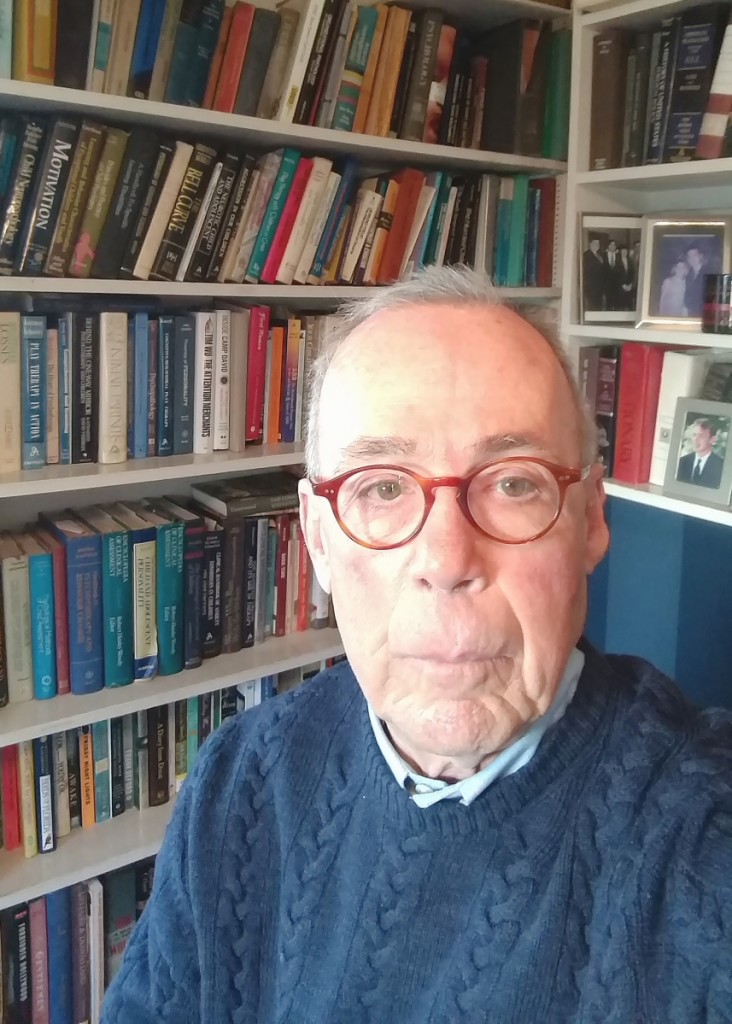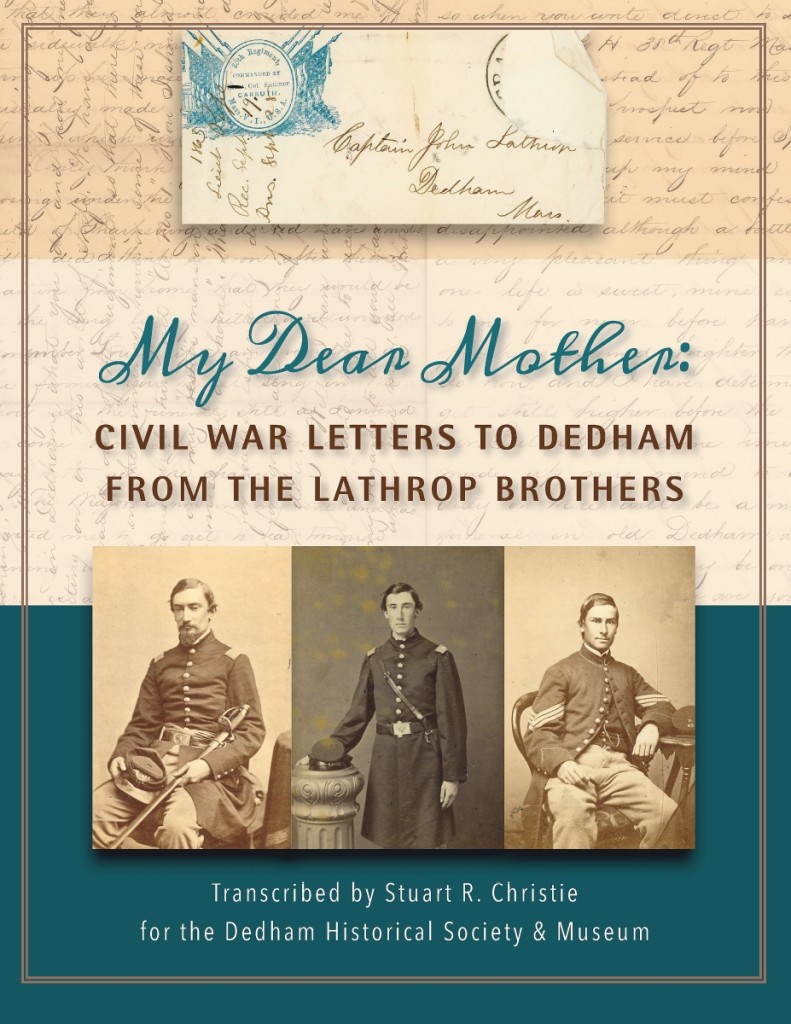The Dedham Historical Society & Museum (DHSM), with the support of board member William Flanagan and the Pagliuca Fund, has recently published My Dear Mother: Civil War Letters to Dedham from the Lathrop Brothers, a transcription of nearly 100 letters written home from the front by Julius, John and Joseph Lathrop. Former DHSM board member, Stuart Christie, who is a veteran of the US Army and who has volunteered for DHSM since his retirement in 2013, spent more than three years transcribing the letters. We reached out to Christie for his insights into this Dedham time capsule.
Did the family give all of their letters to the DHSM?
The letters were donated by a nephew of the three brothers, Julius Lathrop Wakefield. The letters were given to the Dedham Historical Society (as it was named at that time) in 1928. The donation took place four years after the death of his older brother, John, who had served as clerk at DHS, and five years before his own death. Whether or not all of the letters were donated will probably never be known. I would guess that given a 60 or more year spread from when they were written until the time they were donated, several might have been removed both for reasons of privacy as well as a desire on the part of Lathrop descendants to hold onto a few as family keepsakes.
What prompted them to make the donation in the first place?
This is another case where we can only guess what motivated the donation. Certainly, the involvement of Julius Wakefield’s older brother with the DHS was a factor in their being given to the society. But why they were donated when they were is anyone’s guess.
In some ways, it seems as though these letters are both typical and unique…do you agree and can you elaborate on that?
The wonderful feature of the letters is how much they reflect the brothers’ personalities. In particular, I found that Julius’ sense of humor, combined with his love of food, wine and parties, were personality traits that came through clearly in his letters. I felt, as I was transcribing his letters, that I could well have been buddies with him had we served together. Even though I was about 105 years behind him, and in Vietnam, he and I shared similar views related to a number of common issues. One in particular, was our overwhelming anxiety about sending and receiving mail – mine was really the last war where soldiers could only communicate home by letters.
Why did you / the DHSM decide to publish the letters?
The idea behind publishing the letters was entirely that of DHSM’s former executive director, Vicky Kruckeberg. She had already compiled a book earlier in her tenure at DHSM and felt that with the large block of letters from the three Lathrop brothers – there were almost 100 – could be the basis of a very compelling family saga as the three brothers each described their experiences in the war for the Union. The collection reveals an amazing wartime experience with detailed first-hand accounts of battles ranging from North Carolina, to Maryland and Virginia, and then on to Louisiana. Not only did the letters include detailed narratives of the action but also John took time to draw maps laying out the positions of each of the units engaged in battle.
Is this the first transcription project for the DHSM?
Actually the work on the Lathrop brothers’ letters was an offshoot of an earlier transcription project involving another 100 or so letters from other Dedham men who served in the Civil War and a smaller number of letters from World Wars I and II. I was lucky enough to transcribe letters from one Dedham man who, after being wounded, was captured and ultimately sent to the infamous Andersonville prison in Georgia. These included one letter written on a scrap of paper while he was in a captivity in Andersonville. Another, was from a man who wrote about attending a Shakespearean performance shortly after the end of the war where the lead was played by John Wilkes Booth’s brother Edwin. I was somewhat amazed that the audience (all Northerners) erupted in applause for Booth at the end of the play. They really were anxious to move on with life. Among the many items in the archives at DHSM are legal documents going back to the 1640s. One I had a chance to review was a prenuptial agreement dating to about 1700 as well as indenture papers in the late 1600s. Some of these are not in great condition, so I hope for posterity’s sake that work can be done in transcribing these.
Were there many people from Dedham who fought alongside the Lathrop Brothers?
John’s company in the 35th Massachusetts Infantry Regiment was primarily Dedham men. Their initial company commander was from a prominent Dedham family, who like many of the initial officers, were either elected by the men of the company or appointed to their positions because of their status in the home community. This particular C.O. was so disliked that he was sent home before the campaigning began, and disliked by John to the degree that John refused to even appear for his farewell. The brothers also talk about other Dedham men they run into during the time in service. The town of Dedham was well represented in the military and in fact Dedham (based on the geographic boundaries of the town at the time of the Civil War) was home to Camp Miegs, which gained some recognition because of its role as a training camp for the Mass 54th Colored Infantry, made famous by the 1989 movie Glory.
Are there other contemporary accounts from the time that are comparable to this story?
One of the current historians to have written on the Maryland Campaign, which included the Battles at South Mountain and Antietam, is D. Scott Hartwig. His first volume, titled To Antietam Creek, describes the Battle at South Mountain and includes a description of John’s regiment, the 35th, in that battle. The accounts match up nearly perfectly against each other.
-Madelia Hickman Ring
Editor’s note: the book is available here for purchase through its publisher, Damianos Publishing and Silver Street Media for $25.






